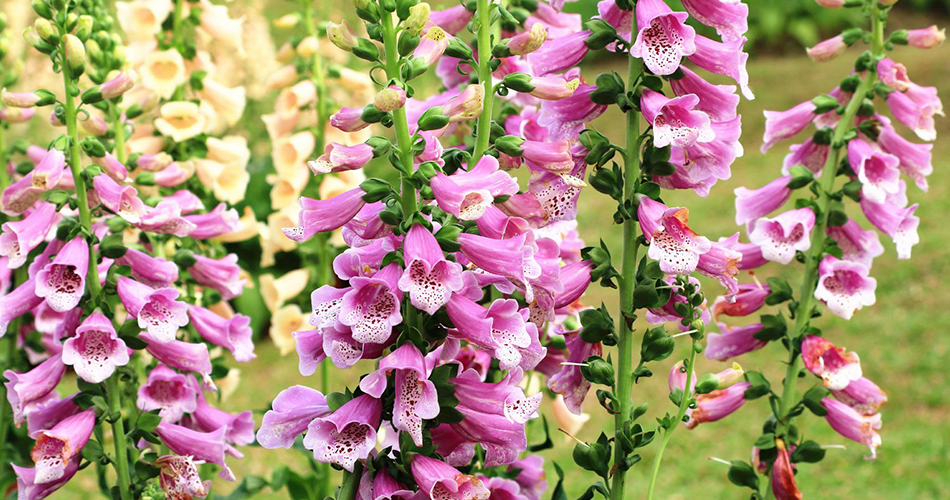FOXGLOVE is a plant that has for centuries been grown in gardens of many lands. They are members of the Figwort family. About 30 species are natives of Europe and western Asia. Some are biennials. Others are perennials. Only a few species are commonly cultivated. In North American gardens, the common or purple foxglove is the most important species. Its bell-like flowers usually grow in a stiff cluster on one side of the stalk. The flowers bloom in June and are two to three inches long. Their color may be white, lavender or deep purple, but most are purple-spotted. The stalk grows up to five feet tall, rising high above a cluster of large gray-green leaves near the ground.
The common foxglove grows wild in shady fields or roadsides in England and other parts of Europe. It grows wild in parts of temperate North America, most often on the Pacific Coast. Its old English name, Folks’ or Fairies’ Glove or Thimble, has been changed to foxglove. Its scientific name, Digitalis, is from the Latin word meaning “of or belonging to the finger.”
The name digitalis is given to a powerful drug, made from the leaves of the common foxglove. The value of the drug as a heart stimulant was discovered long ago in England. These leaves are poisonous to livestock.
Foxgloves are easy to grow if they have some shade the common foxglove is usually grown as a biennial. It is raised from seed planted outdoors in summer so the plants will bloom the following year. The young plants may need winter protection.
Perennial foxgloves are grown from seed or by root division. The flowers of perennial foxgloves are usually yellow.


Be First to Comment